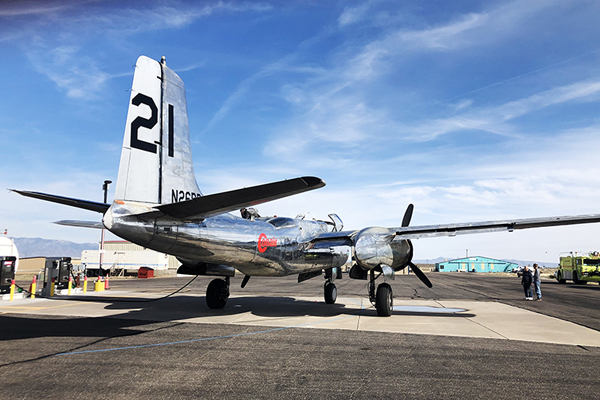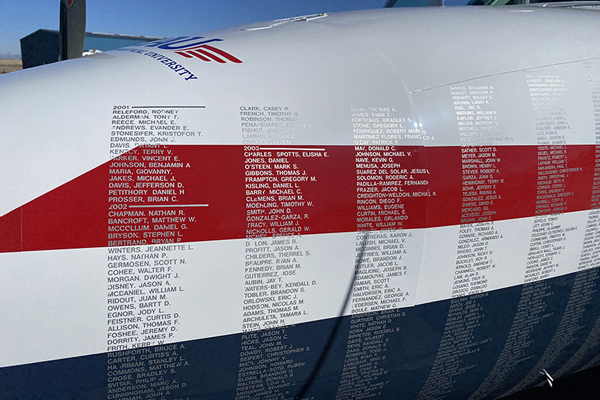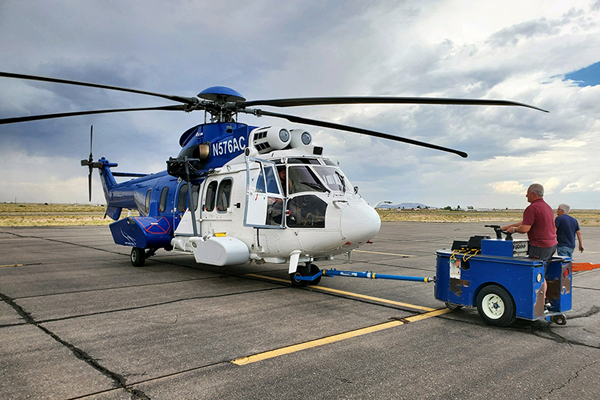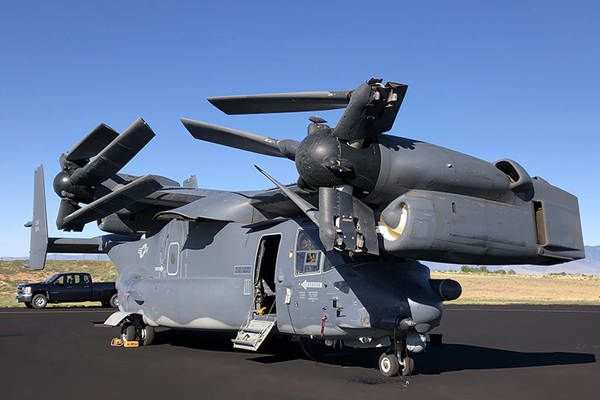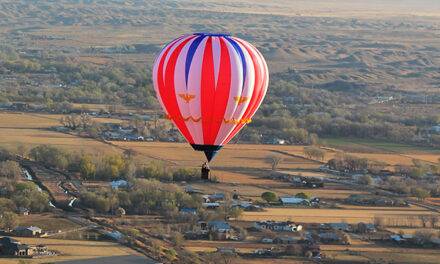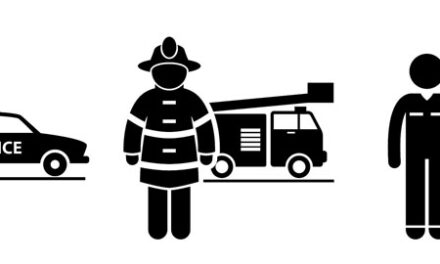La Vida
BELEN — It’s a location featuring broad 360-degree views of high desert beauty. Snowy mountains in the distance against brilliant blue skies and sweeping plains welcome pilots and passengers alike to the entrance by sky to the Hub City and Valencia County.
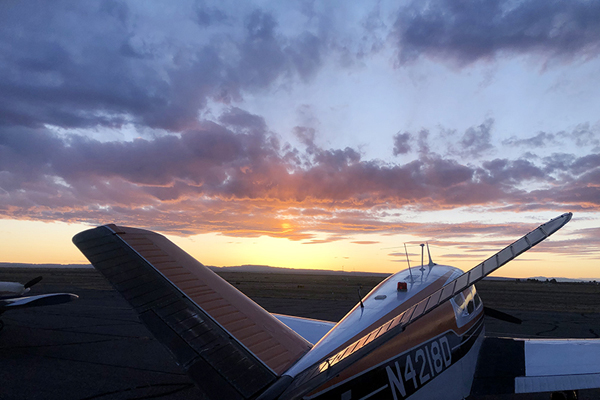
Photo courtesy of John Thompson
Sitting on 400-plus acres, the wide open views from the Belen Regional Airport are spectacular.
The Belen Regional Airport occupies 750 acres on the mesa overlooking the city and is home to several aviation-based businesses as well as hangar space for numerous small, private planes.
Located at 4900 Camino del Llano, the airport has undergone a few name changes since it was established in 1979. Originally, it was called the Goebel Airfield, named for famed stunt pilot and record-breaker Col. Arthur C. Goebel. Years later, it took on the name of former Belen Mayor Neel Alexander before taking on the current regional moniker. The pilots’ lounge still bears Neel Alexander’s name.
John Thompson, the airport director since 2018, says there might be the misconception that he and the two other airport employees sit around drinking coffee and watching airplanes.
While things can get quiet at the airport on bad-weather days, there’s still always something to do — from restriping the pavement on the parking apron to monitoring storm runoff within a matter of hours to keep compliant with environmental regulations, to making sure the runways are clear of debris so pilots can land safely at a moment’s notice.
Thompson, who has been around airplanes and the aviation industry since he was a child and his dad flew crop dusters in the Texas panhandle, lives at the airport and does a little bit of everything.
“Filling potholes, helping with grounds keeping, contracts, leases, federal and state grants,” the director said. “Anything you can imagine that happens at a small airport, I’m involved in it.”
He, along with Danny Goodson and DamiAna Kerns, keep things in tip-top shape at the airport. The three are certified to dispense fuel safely, as well as perform other tasks to assist pilots.
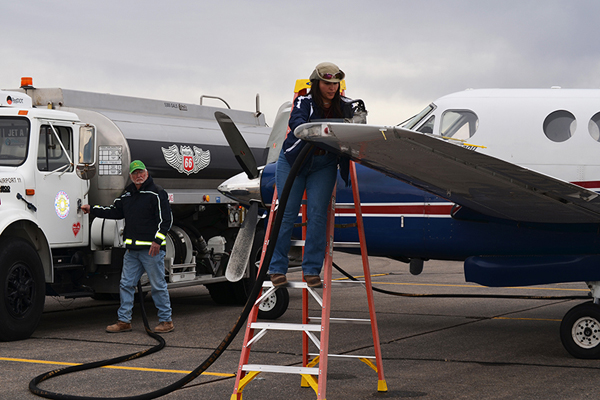
Clara Garcia | News-Bulletin photo
Danny Goodson and DamiAna Kerns fuel up a plane at the Belen Regional Airport. While the airport offers “drive-up” pumps, sometimes refueling has to be done on a taxi way for the sake of expediency.
From the air, the Belen Regional Airport — FAA code KBRG — has two runways. Thompson explains while the average person might only see two paved runways, aircraft can take off or land in four different directions. It depends on the wind
“I guess you could say each runway is two runways, because you make your approach to land from either end of each runway depending on wind direction,” he said.
The third runway was completed in 2015 to accommodate the U.S. Air Force’s 58th Special Operations Wing, which has been using the airport for training since 2016.
The unit practices landings and takeoffs in C-130s, CV-22s and UH-60s at the airport, both during the day and at night, as well as the Air Force 351st practicing parachute jumps from airplanes, rope descents from helicopters and other trainings.
The city’s contract with the Air Force requires a special fire-fighting team be on site at all times.
The Belen Fire Department, Airport Division, known as the Aircraft Rescue and Firefighting Division — more commonly referred to as ARFF — has a crew at the airport, which is on standby for the 58th during training.
“They go out and test their pumps, trucks and everything every morning; do a quick response to the end of the runway, and they’re set and ready for the day,” Thompson. “When the Air Force is doing their training, they will take the fire truck out to be on standby.”
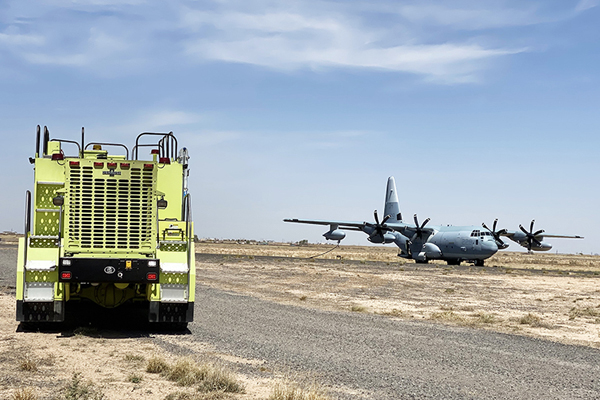
Photo courtesy of John Thompson
During the U.S. Air Force’s 58th Special Operations Wing trainings at the Belen Regional Airport, a crew with the Belen Fire and Rescue Aircraft Rescue and Fire Fighting Division is on standby. The presence of an ARFF unit is required by the contract between the Air Force and city of Belen.
The ARFF unit is housed in a 1,400-square foot double wide Thompson was able to purchase last year.
“They were in a 600-square foot building, six to eight guys, 12 hours a day,” he said. “Now, they have a bunk room, two full-size bathrooms, a full kitchen, dining room, living room and two offices. And it’s right next to the hangar with the trucks.”
The airport is also the home to several businesses related to flying. There are three rows of hangars owned by a local family, who leases them to plane owners. The family leases the property from the airport.
“That draws a lot of business to the airport and generates fuel sales,” the director. “A lot of people who live outside of town, like Albuquerque, have planes here because it’s a lower price than Albuquerque.”
Fuel sales directly benefit the city, he said, and is tested daily for contaminants and water, to make sure it’s in “just perfect condition.”
Other businesses at the airport include Keystone, an aerial photography and mapping company and Shiloh Aviation Center, which builds engines, does annual inspections of planes as well as regular maintenance and repairs.
New Mexico Aircraft Propeller also has a presence at the airport, but their shop is located off site.
“They do still come out here but their shop isn’t here,” Thompson said.
Skydive New Mexico, one of only two skydiving operations in the state, has its office and hangars at KBRG, which houses its plane and equipment. The company has a landing zone at the airport as well, which Thompson and staff keep mowed and maintained.
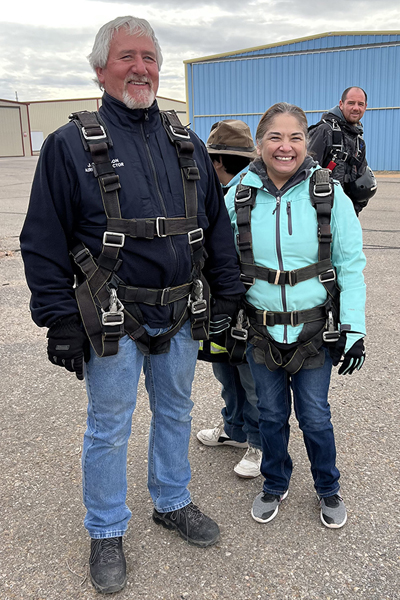
Photo courtesy of John Thompson
Belen Regional Airport director John Thompson and his wife, Gloria, are all smiles after they made jumps with Skydive New Mexico for the first time.
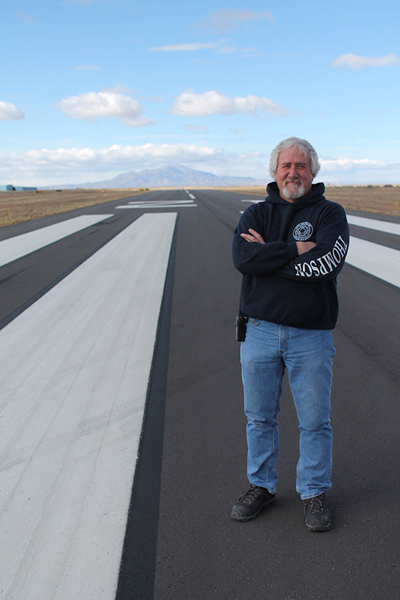
Julia M. Dendinger | News-Bulletin photo
Inspecting the runways is just one of the many things Belen Regional Airport director John Thompson is responsible for at the facility.
Much of the traffic at the airport comes from pilots traveling cross country, he said.
“If it’s getting late in the afternoon or the evening, they’ll stop in the middle of their trip, spend the night in a motel down in town, eat at the restaurants and do a little shopping. Then, the next day, they go ahead and leave.”
To help get pilots and any passengers they might have down into Belen, the airport has two courtesy cars that can be used for a small fee.
“Obviously, they leave the plane, and they sign a waiver that says they are responsible for the car, and we get their driver’s license number and registration number on the plane,” Thompson said. “They are retired police units so it’s not a huge risk.”
Normally, the pilots put gas in the car before they return it to the airport, he said.
“It’s rare we have to put any fuel in at all because the pilots know they are taking care of the next pilot,” he said.
While Thompson doesn’t see the airport moving into commercial passenger flights, mostly due to the proximity of the Albuquerque International Sunport, he said cargo operations are something the facility could support easily.
“An airport this size is really good support for big businesses that come to town,” he said. “We have (executives) from Walmart who flies in here. Wells Fargo and Harbor Freight, they’ve flown in here to check on their store.
“These big businesses, nationwide or even just in the region, we have an airport here to support their leadership’s travel needs.”
The director called the airport a gateway to the community for both businesses and travelers. It’s also a place residents are welcome to visit.
“They can come up and have a cup of coffee and watch the planes,” Thompson says with a chuckle.
Julia M. Dendinger began working at the VCNB in 2006. She covers Valencia County government, Belen Consolidated Schools and the village of Bosque Farms. She is a member of the Society of Professional Journalists Rio Grande chapter’s board of directors.
